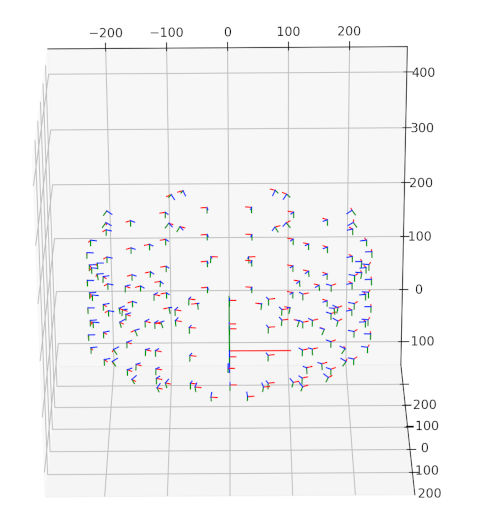HumanRF: High-Fidelity Neural Radiance Fields for Humans in Motion
Mustafa Işık, Martin Rünz, Markos Georgopoulos, Taras Khakhulin, Jonathan Starck, Lourdes Agapito, Matthias Nießner
git clone --depth=1 --recursive https://github.com/synthesiaresearch/humanrf
# Install GLM
sudo apt-get install libglm-dev
# Install required packages and Tiny CUDA NN.
pip install -r requirements.txt
pip install git+https://github.com/NVlabs/tiny-cuda-nn/#subdirectory=bindings/torch
# Install ActorsHQ package (dataset and data loader)
cd actorshq
pip3 install .
# Install HumanRF package (method)
cd ../humanrf
pip3 install .
# Add the installation folder to the PYTHONPATH
export PYTHONPATH=$PYTHONPATH:/path/to/repoTo get started quickly you can download a part of ActorsHQ and run HumanRF with the following commands:
./actorshq/dataset/download_manager.py \
actorshq_access_4x.yaml \
/tmp/actorshq \
--actor Actor01 \
--sequence Sequence1 \
--scale 4 \
--frame_start 15 \
--frame_stop 65
./humanrf/run.py \
--config example_humanrf \
--workspace /tmp/example_workspace \
--dataset.path /tmp/actorshqFor that you will need an access file actorshq_access_4x.yaml, which you can request here, see section "Data access and download" for more details.
The following datastructure is used to store the data:
└── Actor01
└── Sequence1
├── 1x
│ ├── calibration.csv # Camera calibration data as described below.
│ ├── light_annotations.csv # 2D annotations for light sources.
│ ├── masks # Per-frame mask for each camera.
│ │ ├── Cam001/Cam001_mask000000.png
│ │ ...
│ └── rgbs # Per-frame rgb for each camera, with background removed.
│ ├── Cam001/Cam001_rgb000000.jpg
│ ...
├── 2x
│ ...
├── 4x
│ ...
├── aabbs.csv # Per-frame axis-aligned bounding boxes of the meshes.
├── occupancy_grids # Per-frame occupancy grids.
│ ├── occupancy_grid000000.npz
│ ...
├── meshes.abc # Per-frame meshes in the Alembic format.
├── scene.blend # Blender scene file that visualizes meshes, cameras and rgb images.
└── scene.json # Scene description file that stores the number of frames.
In order to be able to download the ActorsHQ dataset you need to request an access yaml file from here. This file contains the credentials to download the data from our cloud storage. Given that file you can use the download_manager.py program to download a subset of the data. For example, to download the first 50 frames of the first sequence of the first actor in 4x scale you can use the following command, which stores the data to /tmp/actorshq:
./actorshq/dataset/download_manager.py \
actorshq_access_4x.yaml \
/tmp/actorshq \
--actor Actor01 \
--sequence Sequence1 \
--scale 4 \
--frame_start 0 \
--frame_stop 50Calibration data is provided an calibration.csv files that have the following format:
name, w, h, rx, ry, rz, tx, ty, tz, fx, fy, px, py
Cam001, 4112, 3008, 3.14159265359, 0.0, 0.0, 1.0, 0.0, 230.0, 1.773863, 1.773863, 0.5, 0.5
...
Here, the rotation vector rx, ry, rz is in axis-angle format and focal length and principal point are normalized by image width and height.
To quickly visualize the cameras in 3D the following snippet can be used:
#!/usr/bin/env python3
import numpy as np
from actorshq.dataset.camera_data import CameraData, read_calibration_csv
from matplotlib import pyplot as plt
from scipy.spatial.transform import Rotation
cameras = read_calibration_csv("/path/to/calibration.csv")
fig = plt.figure()
ax = fig.add_subplot(111, projection='3d')
ax.set_xlim(-2.5, 2.5)
ax.set_ylim(-1.0, 4.0)
ax.set_zlim(-2.5, 2.5)
def draw_axis(c,v,color):
p = c+v
ax.plot([c[0], p[0]], [c[1], p[1]], [c[2], p[2]], color=color, lw=1)
s = 0.1
draw_axis(np.array([0,0,0]), np.array([s,0,0]), "red")
draw_axis(np.array([0,0,0]), np.array([0,s,0]), "green")
draw_axis(np.array([0,0,0]), np.array([0,0,s]), "blue")
for camera in cameras:
rotation = Rotation.from_rotvec(camera.rotation_axisangle)
draw_axis(camera.translation, rotation.apply(np.array([s,0,0])), "red")
draw_axis(camera.translation, rotation.apply(np.array([0,s,0])), "green")
draw_axis(camera.translation, rotation.apply(np.array([0,0,s])), "blue")
plt.show()Which will result in a visualization similar to this one:
A depthmap, as rendered with the provided renderer, can be unprojected to a pointcloud as follows (output .xzy can be opened with meshlab):
#!/usr/bin/env python3
import numpy as np
from actorshq.dataset.camera_data import CameraData, read_calibration_csv
import os
os.environ["OPENCV_IO_ENABLE_OPENEXR"]="1"
import cv2
camera = read_calibration_csv("/path/to/calibration.csv")[0]
depth = cv2.imread("/path/to/depth/Cam001_depth000000.exr", cv2.IMREAD_UNCHANGED)
path_xyz = "/path/to/output/cloud.xyz"
def unproject(cam: CameraData, depth: np.array):
xx, yy = np.meshgrid(np.arange(cam.width), np.arange(cam.height))
coords = np.stack([xx, yy, np.ones_like(xx)], axis=-1) * depth[:,:,np.newaxis]
coords = coords[depth > 0].reshape(-1, 3)
Kinv = np.linalg.inv(cam.intrinsic_matrix())
return coords @ Kinv.T
points = unproject(camera, depth)
with open(path_xyz, "w") as f:
for p in points:
f.write(f"{p[0]} {p[1]} {p[2]} \n")nvidia-docker build --build-arg TCNN_CUDA_ARCHITECTURES=86 .Besides the source code of HumanRF and the raw data we provide additional tools and examples to ease the work with the ActorsHQ dataset. These tools are located in actorshq/toolbox and are described in a separate readme file.
The following functionality is provided:
- Export ActorsHQ to a blend file (note that these can be downloaded via download_manager.py)
- Export ActorsHQ to colmap format
- Export ActorsHQ to NGP format
- Import DFA to ActorsHQ format
- Occupancy grid generator
- Alembic (
.abc) to obj converter - Alembic renderer (masks / depthmaps)
If you use ActorsHQ or HumanRF in your work, please consider citing via
@article{isik2023humanrf,
title = {HumanRF: High-Fidelity Neural Radiance Fields for Humans in Motion},
author = {I\c{s}{\i}k, Mustafa and Rünz, Martin and Georgopoulos, Markos and Khakhulin, Taras
and Starck, Jonathan and Agapito, Lourdes and Nießner, Matthias},
journal = {ACM Transactions on Graphics (TOG)},
volume = {42},
number = {4},
pages = {1--12},
year = {2023},
publisher = {ACM New York, NY, USA},
doi = {10.1145/3592415},
url = {https://doi.org/10.1145/3592415},
}This work is made available under the Attribution-NonCommercial 4.0 International (CC BY-NC 4.0) license, see LICENSE.txt for details.

